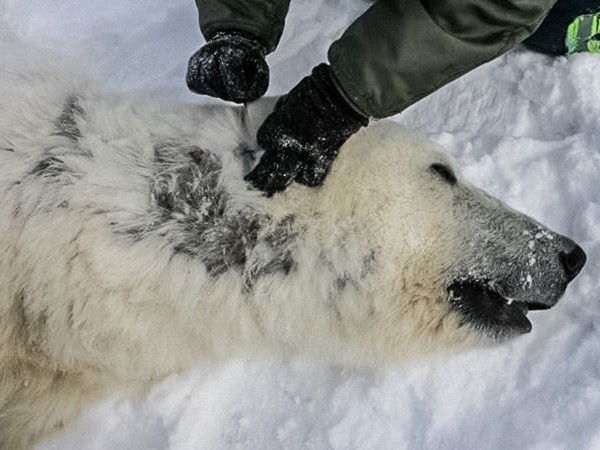A polar bear s skin is black its fur is actually clear but like snow it appears white

A Polar Bear’s Skin and Fur: The Fascinating Truth

When we think of a polar bear, the image that comes to mind is a majestic creature coated in pristine white fur, blending seamlessly into the snowy Arctic landscape. However, did you know that a polar bear’s skin is actually black, and its fur is transparent? This fascinating fact reveals the remarkable adaptations of these formidable Arctic predators.
The black skin of a polar bear serves as a natural solar panel. As it absorbs sunlight, it aids in the regulation of the bear’s body temperature, a crucial aspect of survival in the freezing Arctic climate. The dark pigmentation of their skin enables them to capture and retain heat more efficiently, helping them stay warm and comfortable even in sub-zero temperatures. This adaptation highlights the incredible ways in which animals have evolved to adapt to their environment.
:max_bytes(150000):strip_icc()/the-black-skin-of-an-arctic-polar-bear-981483822-b7e3239d6d6b4dfbbe7cb361d3a8a90a.jpg)
Interestingly, the fur of a polar bear is not truly white. Instead, it is made up of transparent hair shafts that reflect light. These hollow, translucent hairs scatter and reflect the light, creating an illusion that the fur is white, just like the snow-covered environment. This deceptive appearance allows polar bears to remain camouflaged as they stalk their prey on the icy tundra. The fur also provides excellent insulation by trapping air close to the body, further aiding in temperature regulation.
The combination of black skin and clear fur grants polar bears a remarkable advantage when it comes to survival in their Arctic habitat. Whether they are hunting seals on the sea ice or navigating the frozen landscapes, these natural adaptations enable them to thrive in a harsh and unforgiving environment.
The ongoing climate crisis poses a significant threat to polar bears. With their habitat rapidly disappearing due to melting ice and rising temperatures, polar bears are increasingly vulnerable. Understanding the intricacies of their adaptations not only fosters a sense of wonder but also highlights the urgency of conservation efforts. By protecting their fragile ecosystem, we play a vital role in ensuring the survival of these magnificent creatures for generations to come.
Source: National Geographic - Polar Bear
Related Posts
Quick Links
Legal Stuff

